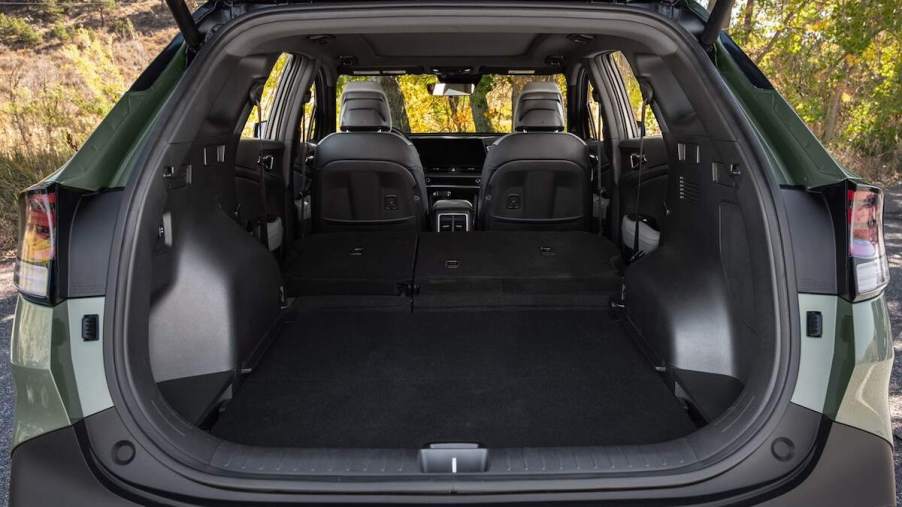
How Big Is 1 Cubic Foot of Space in a Car’s Cargo Area?
New cars have long spec sheets detailing everything from engine power to third-row hip room. Whether they have families or are single riders, American drivers typically look for vehicles with the biggest cargo space. In the United States, automakers use cubic feet to measure a car’s cargo area. What exactly is a cubic foot, and is this unit the most accurate way to measure usable cargo space inside a vehicle?
What is a cubic foot?
A cubic foot is a unit of measurement commonly used by landscapers and other contractors to measure the volume of an area. As the name suggests, cubic feet measure the area of an object as if it were a cube or box. So, imagine one cubic foot to look like a square box whose sides measure one foot each. To find the cubic feet of an object, use this formula: length x width x height.
If the object you’re measuring isn’t a standard square or rectangle, there are other ways to find its cubic footage. For things like pipes or tubes, you multiply the height and diameter of the object in feet. Multiply that number by 3.14, and you get the cubic feet of a cylinder.
Once you know an object’s length in cubic feet, it’s easy to convert that to other units of measurement. For a conversion to cubic centimeters, multiply the total cubic footage by 28,316.8. If you want the cubic inches of an object, multiply your cubic foot measurement by 12.
Cubic feet can also be converted into cubic yards or meters, but don’t worry if you can’t remember how to convert each measurement. In that case, MasterClass recommends using an online calculator.
Official cargo space numbers for cars aren’t always accurate
Cubic feet are more useful for measuring the depth of an area than feet or height alone. Even so, using cubic feet to measure the cargo capacity of a car often leads to inaccurate measurements. For one thing, unless you’re measuring the depth of a Kia Soul’s cargo bay, few vehicle interiors are perfectly square.
Additionally, there’s only so much you can safely cram into an SUV or hatchback despite what the measurements tell you. In theory, you should be able to stack suitcases as high as possible to use every square inch of the cargo area. But that obscures outward visibility, making reversing your car less safe. Though most modern vehicles have backup cameras, they’re not an infallible solution for preventing accidents.
Automakers typically use the “SAE J1100 Motor Vehicle Dimensions” to measure cargo space. However, because there are different versions of the SAE J1100, your car might have more or less cargo area than advertised. In extreme cases, we’ve seen that discrepancy to be as high as 23 cubic feet. Unfortunately, automakers likely won’t be pressured to share the same SAE J1100 standards with one another anytime soon.
Here’s the most practical way to determine your vehicle’s cargo space
Even in a perfect world where you could trust cargo capacity specs, it’s difficult to picture how many items those spaces would hold. For a more accurate picture, try fitting as many suitcases as possible into your vehicle’s cargo area. Remember to be realistic, and keep the rear window unobstructed.
Of course, there’s no easy way to do that if you’re shopping for a car you don’t own yet. However, if you research car reviews from experts such as Consumer Reports, you’ll find some do manual luggage tests.
Cubic feet might give you a general idea of a vehicle’s cargo space, but it’s not a perfect system.


